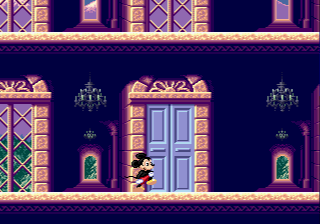

The Enchanted Forest, Toyland, The Library, and the Castle stages all hail from the Genesis version, while the Clock Tower and the Dessert Factory are exclusive to the Master System and Game Gear versions. Not even nightmare-inducing anthropomorphic letters sully Mickey’s stride! A more optimistic video game character, there isn’t. His girlfriend may be kidnapped, but he knows he’s gonna rescue her ’cause, well, he’s Mickey. He can still throw objects, still butt pound his enemies into oblivion. Mickey can handle a powerful witch, but God forbid he encounter insects.Īs in the Genesis version, Mickey’s out to save Minnie from the evil witch, Mizrabel. While the graphics do take a considerable hit, the quaint, lighthearted platforming feels much more at home here than on the Genesis. Sega’s 8-bit versions of their popular arcade/Genesis titles often suffered during conversion (see: Golden Axe, E-SWAT, among many others). The beautifully rendered environments, Mickey’s smooth animation, the gorgeous storybook presentation: all meant to distract from the 8-bit era hop-and-bop platforming.Īnd then there’s Castle of Illusion for the Master System. The game may have played like a platformer of its day, but its outstanding visuals more than justified the cost of a new console.Ĭastle of Illusion for the Genesis is indeed a visual masterpiece – a Disney cartoon come to life – but the game clearly values style over substance. 3 were “the hotness.” Pre- Sonic the Hedgehog, I can imagine many kids receiving the Genesis with Castle of Illusion and not being disappointed. The NES was still going strong and 8-bit platformers like Super Mario Bros. The SNES was a year out from launch in North America. Castle of Illusion – one of Sega’s flagship games for the Genesis that year – released in December 1990, only 16 months after the Genesis debuted in North America. Mickey ponders whether Minnie is worth the hassle.īy late 1990, the 16-bit party was just beginning.


 0 kommentar(er)
0 kommentar(er)
